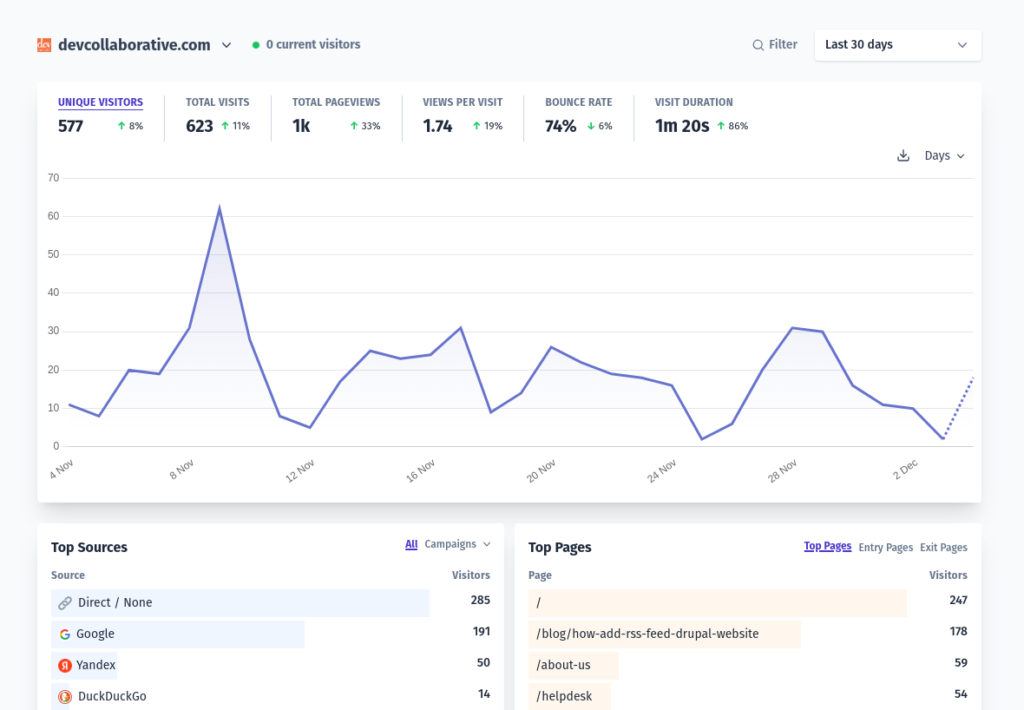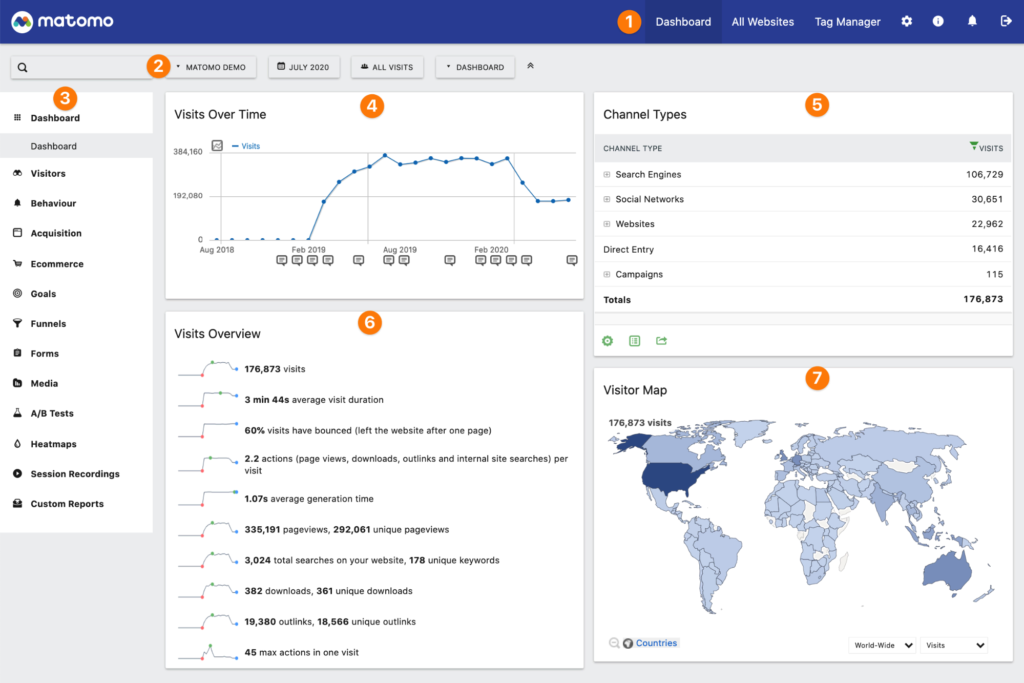Google Analytics has been the go-to for years, but let’s be real—GA4 threw a lot of us for a loop. It’s like they took something that worked fine in v3 and decided to overcomplicate it with menus inside menus and a dashboard that feels like a scavenger hunt.
We got tired of digging for basic stats, so we started hunting for alternatives that don’t make you feel like you need a PhD to understand your own site traffic.
After some trial and error, here’s what we found: three solid options that cut the clutter—and the one we actually stuck with.
1. Plausible – Our Favorite Pick

We switched to Plausible for one main reason: simplicity. That’s it. After wrestling with GA4’s clunky interface and spending way too much time trying to find basic metrics like page views or bounce rates, Plausible felt like a breath of fresh air.
You log in, and boom—there’s a clean, readable dashboard staring back at you. No fluff, no buried data, just real-time stats and full tracking capabilities. Plus, it doesn’t rely on cookies or drag your site speed down with heavy scripts, which is a win for both us and our visitors.
Why we love it:
-
Super lightweight – We’re talking a script so tiny it won’t slow down your site. Our page load times actually improved after ditching GA.
-
No cookies or GDPR headaches – It’s privacy-friendly out of the box. No annoying consent pop-ups, no legal stress.
-
Easy to use – Seriously, everything you need is right there. No clicking through ten tabs to figure out where your traffic’s coming from.
-
Affordable – Pricing is straightforward, no hidden fees. It scales nicely whether you’re running a small blog or a bigger site.
For us at Traffic Masters, Plausible was the no-brainer replacement for Google Analytics v3. It’s not trying to do everything under the sun—it just does the important stuff really well. If you’re fed up with overcomplicated tools and want something that just works, this is it.
Try it here: https://plausible.io
2. Fathom Analytics

Fathom is another gem we came across, and it’s picking up steam for a reason. It’s got that same privacy-first vibe as Plausible but with a slightly different flavor.
The dashboards are dead simple—maybe even more minimal than Plausible’s—but they still pack enough depth to keep you informed. What really caught our eye, though, was the EU isolation for data storage. If you’re in Europe or just paranoid about GDPR (no judgment here), that’s a massive perk.
Key features:
-
Privacy-first – No cookies, no tracking banners. It’s like they built it with regulators in mind.
-
Fast – The script is so small you’d barely notice it’s there. Site speed stays snappy.
-
Bypass ad blockers – This is huge. A chunk of our audience blocks Google Analytics, but Fathom still catches their data without being creepy.
-
Team features – You can invite your crew to check out the stats or tweak things, which is clutch if you’re collaborating.
Fathom’s interface might feel too stripped-down if you’re used to GA’s endless options, but honestly, that’s part of its charm. It’s like the Marie Kondo of analytics—only the essentials stay.
We didn’t end up sticking with it (more on that later), but it’s a strong contender if minimalism is your thing.
Check it out here: https://usefathom.com
3. Matomo

Then there’s Matomo—formerly Piwik for the old-school crowd. This one’s a bit of a different beast. If Plausible and Fathom are the “set it and forget it” types, Matomo is more like a DIY project.
It’s super customizable, and you can even self-host it on your own server if you’re into that. For control freaks (or developers who love tinkering), it’s a dream. You can tweak every little detail and keep your data 100% in-house—no third-party cloud nonsense.
Who it’s for:
-
Agencies or companies needing advanced reporting – Think heatmaps, A/B testing, the works. It’s got features GA users will recognize.
-
Sites that require full data ownership – Self-hosting means you’re not trusting anyone else with your stats.
-
Teams who want to avoid third-party cloud storage – If you’re skeptical about data breaches or just like being off-grid, this is your pick.
The catch? It’s not as plug-and-play as the others. There’s a steeper learning curve, and setting it up takes more time—especially if you’re going the self-hosted route.
We tested it out, and while it’s powerful, we didn’t need all the bells and whistles. Still, if you’re running an enterprise setup or managing multiple client sites, Matomo’s worth the effort.
Learn more: https://matomo.org
Final Thoughts
GA4 might still be the default for some folks, but for us, it’s become this over-complicated, bloated mess.
We don’t need a million dashboards or AI predictions about hypothetical visitors—we just want a clear snapshot of how our site’s doing. That’s where these alternatives shine. They strip away the noise and get to the point.
Here at Traffic Masters, we landed on Plausible as our go-to. It’s lightweight, easy to use, and gives us everything we need without drowning us in extras we’ll never touch.
We’ve been running it for months now, and it’s been smooth sailing—no regrets about ditching GA.
Fathom’s a close second if you want something even simpler, and Matomo’s perfect if you’re ready to roll up your sleeves and customize.
If you’re on the fence about jumping ship from Google Analytics, give Plausible a spin. It’s not just an alternative—it’s a relief.
What’s been your experience with GA4? Drop a comment if you’ve tried any of these or found another tool that’s working for you!


